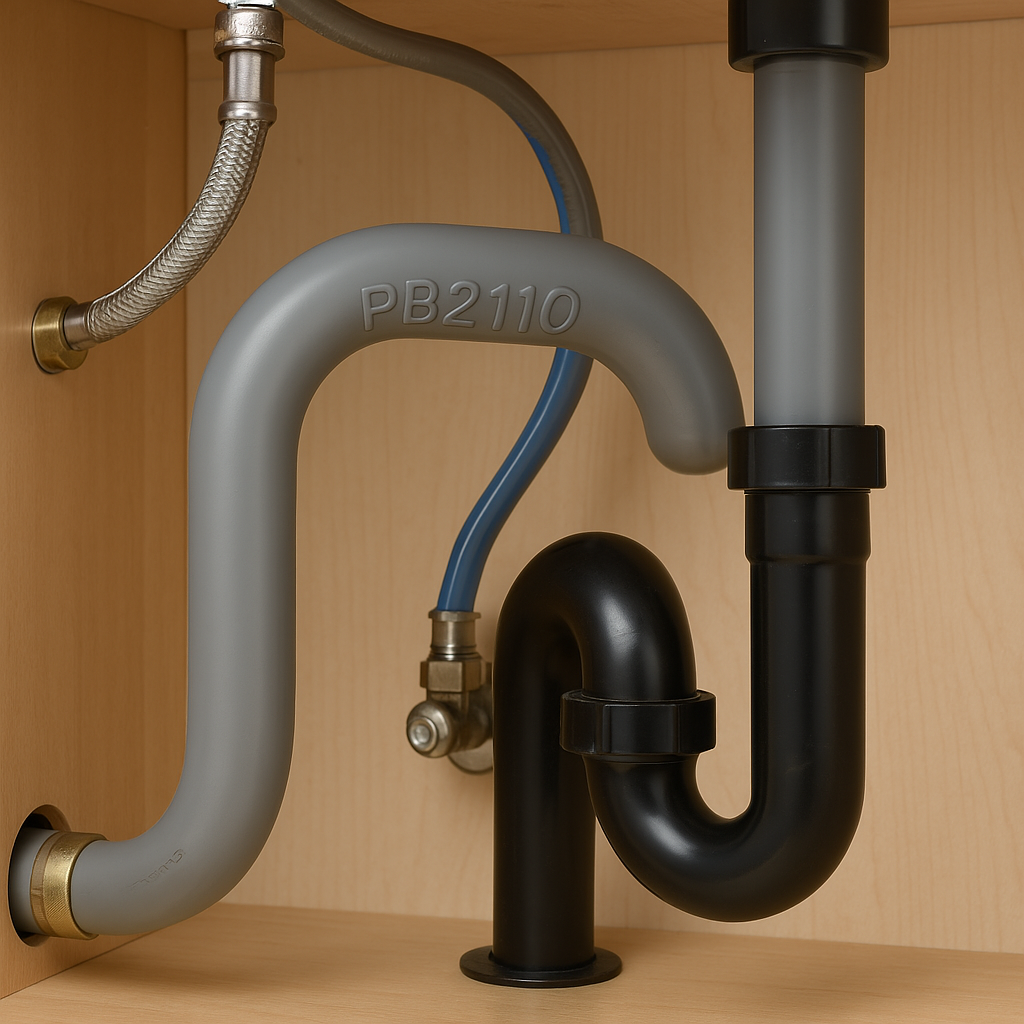
By Jenny Holly Hansen | WBN News | April 17, 2025
In homes and buildings constructed between the late 1970s and the mid-1990s, there's a quiet risk hiding behind the walls—and it’s not always obvious until it’s too late. It’s called polybutylene piping, more commonly referred to as Poly-B. Once considered a cost-effective alternative to copper, Poly-B is now flagged by many insurers as a liability.
Whether you're a homeowner, buyer, or insurance broker, understanding the implications of Poly-B plumbing is crucial. Not only can it lead to unexpected water damage, but it can also create major complications when it comes to securing or renewing home insurance coverage.
What Is Poly-B Plumbing?
Poly-B piping is a flexible, plastic plumbing material that was widely installed in residential properties across Canada and the U.S. from around 1978 to 1995. Typically gray, but also available in blue or black, Poly-B was used for both hot and cold water supply lines and was often promoted for being inexpensive and easy to install.
Unfortunately, as time passed, it became clear that Poly-B didn't hold up well over the years. The material has a tendency to become brittle and degrade, especially when exposed to the chlorine and other oxidants commonly found in municipal water supplies.
Why It Fails
Poly-B piping fails primarily due to chemical reactions between the plastic and treated water. These reactions cause the inner walls of the pipes to flake, crack, and eventually rupture. Because the degradation happens from the inside out, it’s often invisible until a pipe leaks or bursts.
Some of the most common failure points are the joints and fittings, particularly those made from acetal (a type of plastic). These fittings have also been prone to cracking under pressure.
Insurance Implications
Many insurance companies are unwilling to provide coverage for homes that still have Poly-B plumbing, or they may charge higher premiums and require a higher deductible for water damage claims. In some cases, insurance coverage can even be denied or cancelled altogether if Poly-B is discovered after a policy is issued.
From an underwriting perspective, Poly-B represents a known and documented risk. And with water damage being one of the most frequent and costly types of home insurance claims, insurers are rightfully cautious.
What Homeowners and Buyers Should Do
If you're purchasing or already own a home built between 1978 and 1995, it’s worth having a licensed plumber inspect the property to determine if Poly-B piping is present. You can often identify it by looking under sinks, in unfinished basements, or near the water heater for gray plastic piping labeled “PB2110.”
If Poly-B is confirmed, the best course of action is replacement. Though repiping a home can be a significant upfront investment, it can prevent far greater damage and expense in the future—not to mention make the property more attractive to insurers and future buyers.
A Note for Brokers
For us as insurance brokers, Poly-B presents both a challenge and an opportunity. It’s a challenge when a client is unaware of their home’s plumbing and runs into difficulty securing coverage. But it’s also an opportunity to be proactive—by educating clients, recommending plumbing inspections during real estate transactions, and guiding them through risk reduction strategies, we position ourselves as trusted advisors.
By helping clients replace outdated Poly-B systems, we’re not just protecting their homes—we’re also improving their eligibility for better insurance products.
In Summary
Poly-B piping is more than just an outdated material—it’s a risk that continues to impact property owners and insurers today. If you're in the business of homeownership, real estate, or insurance, it’s essential to understand how Poly-B affects coverage eligibility, premiums, and long-term property value. Identifying and replacing Poly-B is one of the smartest preventative steps you can take.
If you’re unsure whether your property—or your client’s property—contains Poly-B, reach out to a professional plumber and talk to your insurance provider. A bit of foresight today can save a lot of heartache tomorrow.
Let’s Keep Talking:
Jenny is a business insurance broker with Waypoint Insurance.
She is also a business development consultant with Impresario Partners, helping Canadian Business expand overseas.
She can be reached at 604-317-6755 or jholly-hansen@wbnn.news. Connect with Jenny on LinkedIn at https://www.linkedin.com/in/jenny-holly-hansen-365b691b/. Connect with Jenny at BlueSky: https://bsky.app/profile/jennyhollyhansen.bsky.social
Let’s Meet Up:
Jenny Holly Hansen is a cohost with Chris Sturges of the Langley Impact Networking Group. You are welcome to join us on Thursday’s from 4pm to 6pm at: Sidebar Bar and Grill: 100b - 20018 83A Avenue, Langley, BC V2Y 3R4
Tags: #Jenny Holly Hansen #Poly-B Plumbing #Polybutylene Pipes #Water Damage #Higher Insurance Premiums #PB2110



